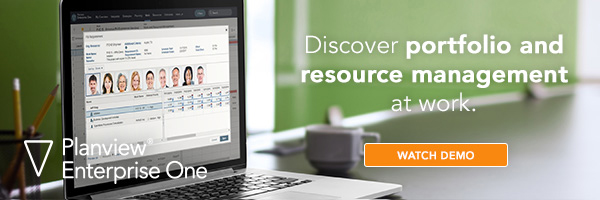
Your organization’s ability to react quickly and pivot to changes and disruptions is crucial to remaining relevant to your customers. In a recent webcast, Planning Deconstructed, Heather Westomoreland, Planview Planning Capabilities Product Manager and Angie Sarmiento, Planview Solutions Marketing Manager discuss continuous planning and the steps organizations can take to have a more proactive role in creating, executing, and managing different planning types. This blogs provides a simple analogy about leveraging continuous planning when planning a trip, how to evaluate planning practices within your organization, steps to consider when beginning your planning process, and the capabilities needed to advance your continuous planning process.
Continuous Planning Analogy – Planning a Trip
To better understand how continuous planning works, consider the following planning exercise where you plan a vacation.
Planning any trip can become overwhelming, fast. You need to consider flights, lodging, cities to visit, where to eat, ground transportation, and more. The trick is to break the trip down into smaller segments and create iterative programs.
For example, you want to visit a new country every year for the next five years. To simplify planning, you need to break down each city you plan to visit into separate iterative programs. Once you create your programs, you can then identify objectives for each. Consider variables like time of year, cost savings opportunities, travel companions, and availability. Then, you will want to consider factors such as actual landmarks, tourist attractions, and restaurants to try. Outlining these types of variables will help set the roadmap to allow for better decision making across your program. Here’s a simple breakdown of what that might look like.
- Strategy goal: Identify what country you want to visit: United Kingdom.
- Iterative program: Determine which cities you want visit: London.
- Project: Determine the objective of the trip: Write a blog about your visit.
- Outcomes: Think with the end in mind. Research all of the site-seeing locations you plan to visit that will contribute to your blog. Then further define costs, benefits, and value. Understanding the details of these outcomes allows you to properly fund the trip and accomplish each milestone.
But wait. What about those unexpected events? As you know, no plan is ever set in stone – disruptions occur. The ability to be agile or flexible in your planning process is crucial – even when the plan is already in action. You can better respond to those changes by developing contingency plans and creating what-if scenarios to make trade-off decisions easier.
For example, severe thunderstorms might prohibit you from going to the London Eye or your tour to Stonehenge may run longer than expected affecting your evening dinner plans. If you plan in advance and have the flexibility to pivot and re-prioritize, your trip will go much smoother.
No matter if you are planning a vacation or planning your next strategic portfolio, when continuous planning is practiced your organization can better:
- Streamline the prioritization and funding allocation process
- Fund programs iteratively and from strategic targets
- Continuously identify and resolve conflicting priorities, capacity, or funding issues
- Enable you to deliver more frequently
- Add agility into your continuous planning process, which offers an important benefit
So, how can you apply this example to the planning process for your organization? To incorporate a continuous planning approach, you’ll need to understand your organization’s current state of maturity.
What is the Current Approach to Planning for Your Organization?
Consider these important questions for not only how you are currently planning but also how you can incorporate a continuous planning approach:
- How is your organization currently planning?
- What types of planning does your organization leverage?
- Who are the key stakeholders that should be involved?
- Is there an existing process to revisit your plans regularly and continuously to ensure the plan is being executed and delivered properly? If so, does the plan need to change?
- What are the incremental steps needed to adopt a continuous planning approach?
- What types of planning are necessary to help improve maturity?
- Does your annual planning process incorporate your organization’s strategic priorities?
- Do you understand the impact of trade-off decisions, accepting new, delayed, or dropping projects within your strategy?
- What happens to your annual plan once it’s been approved?
- How is your organization measuring performance?
Now that you have examined your organization’s planning process, what tools, technology, and capabilities are needed to take your continuous planning practices to the next level.
5 Capabilities Needed to Improve Continuous Planning In Business
As your organization starts the planning process look for a planning tool that allows you to:
- Prioritize your strategies because they impact program prioritization.
- Analyze the demand associated with the programs and outcomes.
- Evaluate resource capacity and budgets. “Do we have the resource capacity to meet the demand in the time frame being requested?”
- Shift investments to balance the available resource capacity in the requested time frame.
- Collaborate with stakeholders. Program, project, and outcome managers need to coordinate availability of resources, honor critical time frames and milestones, and agree on approved trade-off decisions.
To take a deeper dive into this information, I recommend you:
- Watch the full Planning Deconstructed webcast to see a product demonstration that illustrates how to create what-if scenarios and make trade-off decisions allowing you to update plans when unexpected disruptions occur
- Read the Planning Deconstructed eBook
- Visit info/planning, or
- Email [email protected]






